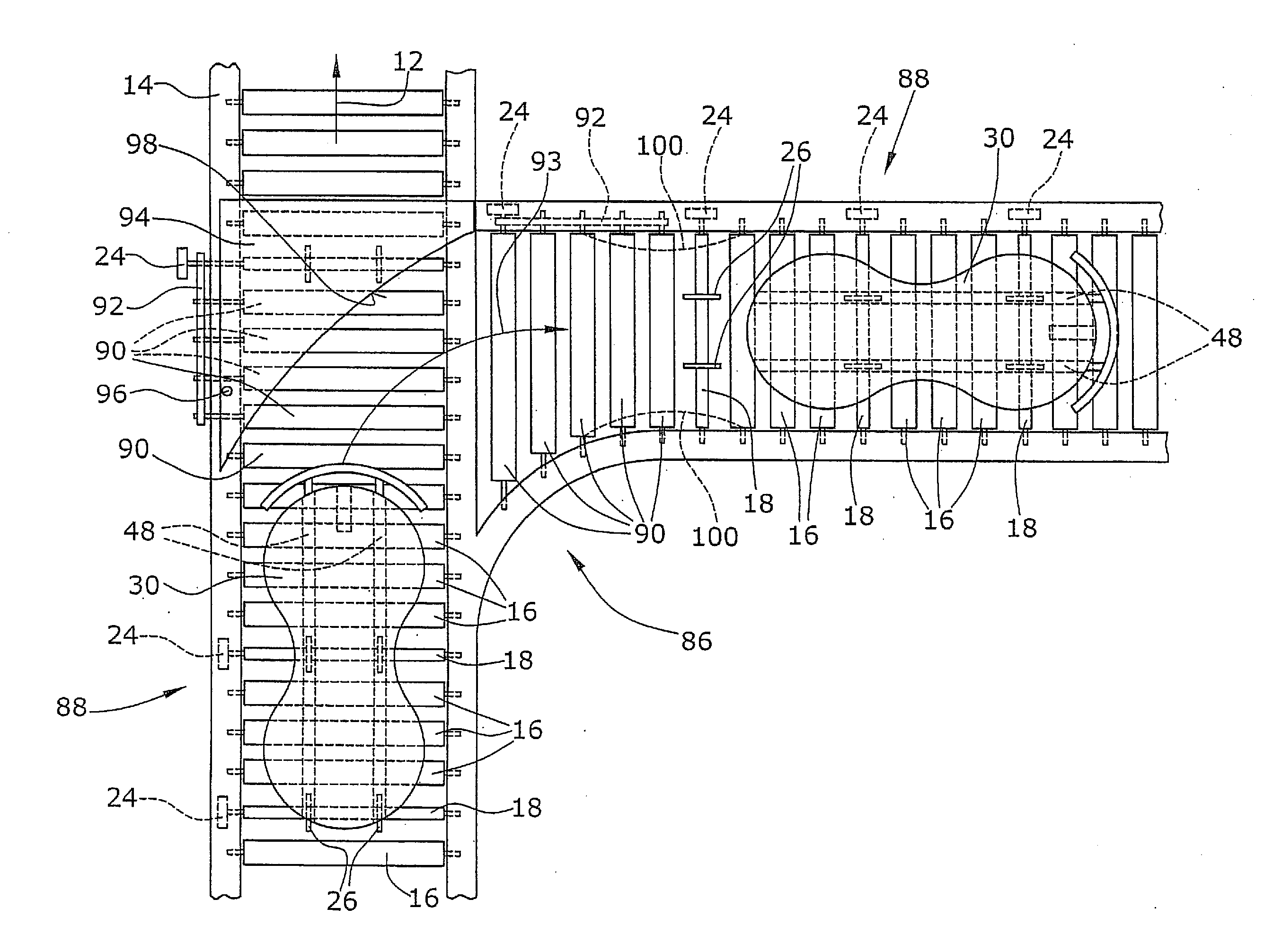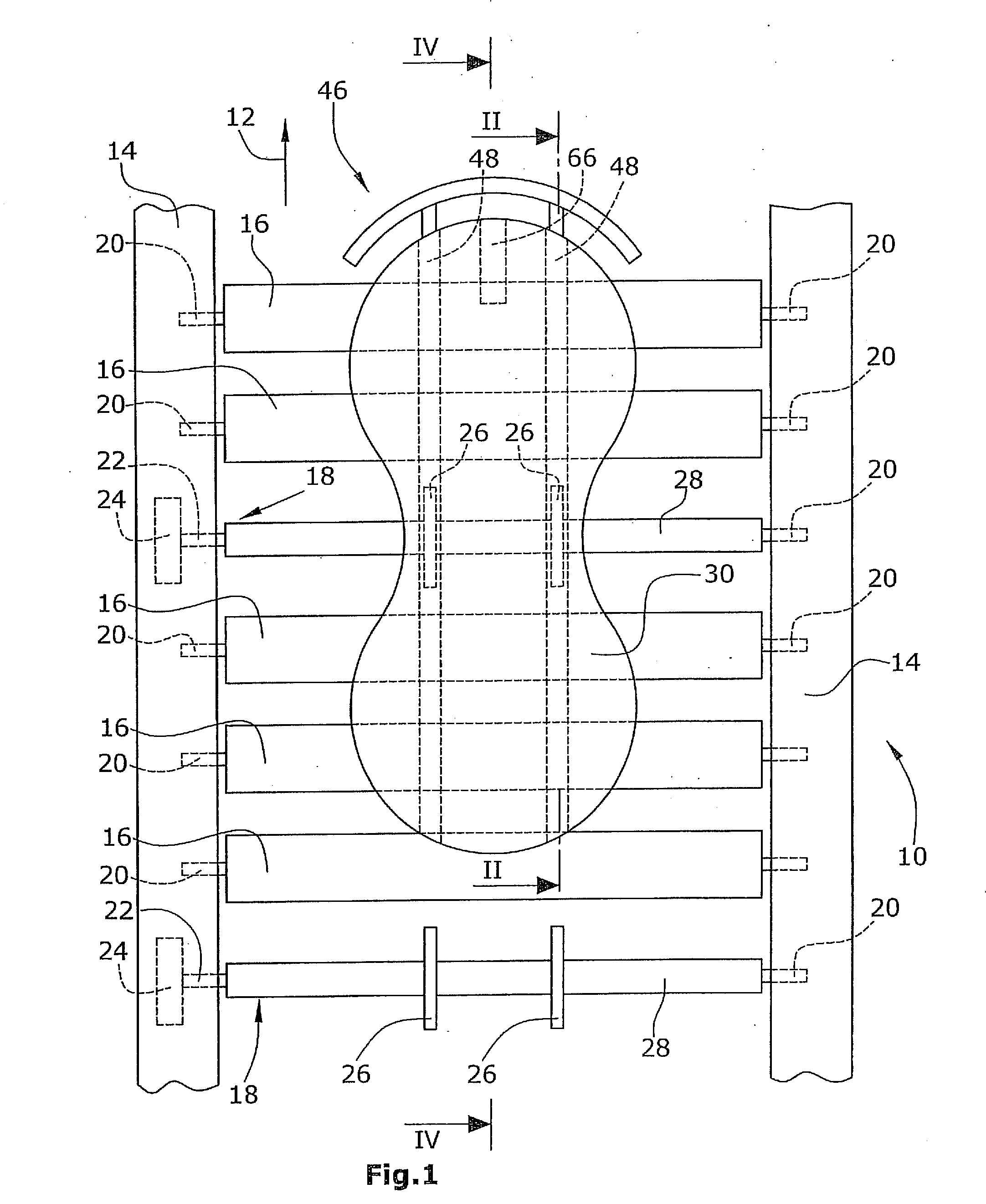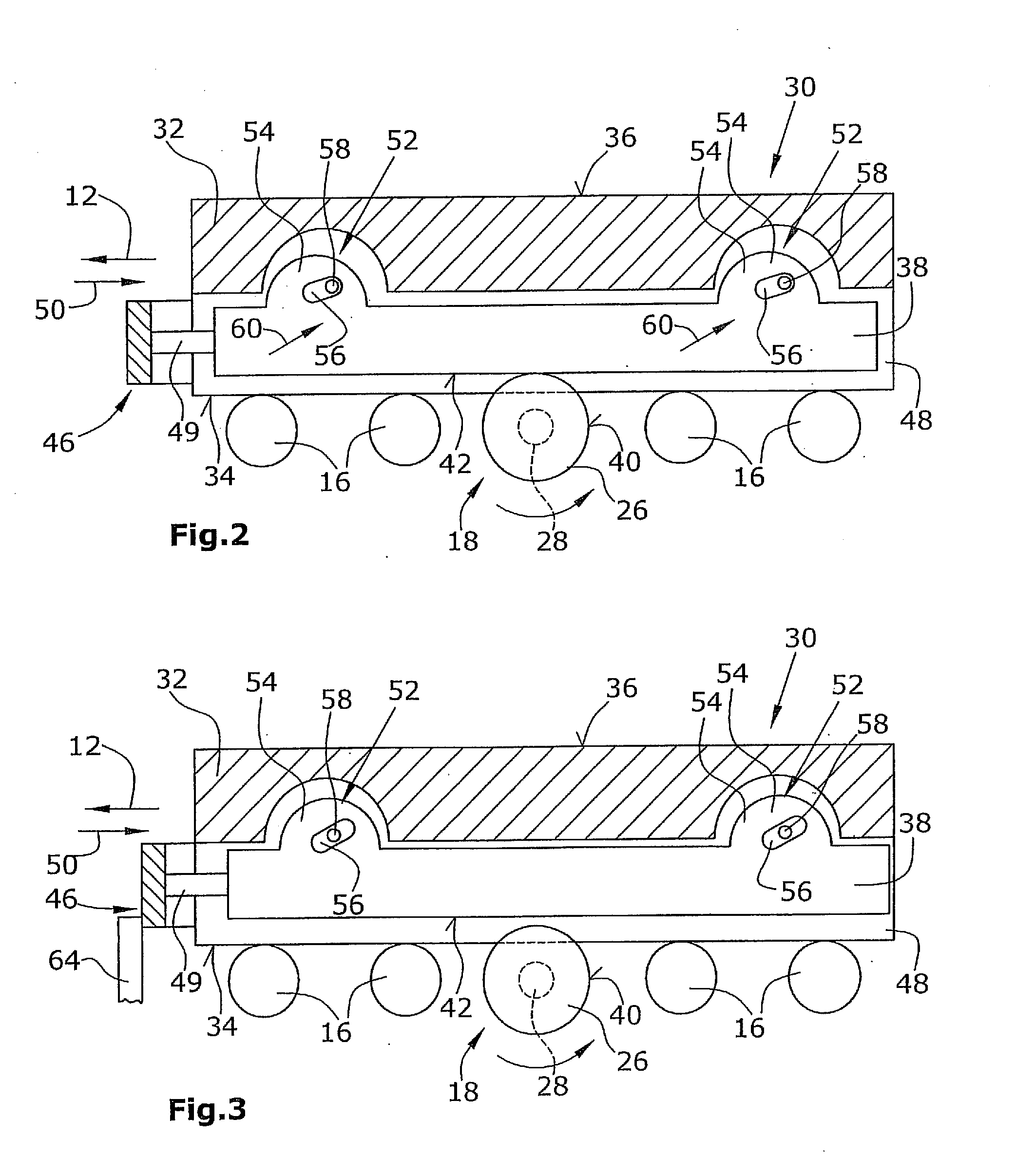Conveyor system
a conveyor system and belt conveyor technology, applied in conveyors, conveyor parts, rollerways, etc., can solve the problems of inability to move the workpiece carrier, inability to check the setting, and high cost of the friction clutch
- Summary
- Abstract
- Description
- Claims
- Application Information
AI Technical Summary
Benefits of technology
Problems solved by technology
Method used
Image
Examples
Embodiment Construction
[0038]The friction conveyor system comprises a conveyor means 10. The conveyor means 10 has frames 14 extending in the longitudinal or conveying direction 12. In addition, the conveyor system may comprise switches and curves not illustrated in the Figures. In the embodiment illustrated, the frames 14 support freely rotatable supporting rollers 16 and conveyor rollers 18. The supporting rollers are supported in a freely rotatable manner in the frames 14 through axes 20 and corresponding bearings. In the embodiment illustrated, the driven conveyor elements (conveyor rollers 18) also extend over the entire width of the conveyor means 10 such that one side of the driven conveyor rollers 18 is supported for free rotation in the frame 14 via a shaft 20. The second shaft 22 of the driven conveyor means 18 is driven by and connected with an electric motor 24.
[0039]In the embodiment illustrated, the conveyor rollers 16 that are not driven and the driven conveyor elements 18 extend over the e...
PUM
 Login to View More
Login to View More Abstract
Description
Claims
Application Information
 Login to View More
Login to View More - R&D
- Intellectual Property
- Life Sciences
- Materials
- Tech Scout
- Unparalleled Data Quality
- Higher Quality Content
- 60% Fewer Hallucinations
Browse by: Latest US Patents, China's latest patents, Technical Efficacy Thesaurus, Application Domain, Technology Topic, Popular Technical Reports.
© 2025 PatSnap. All rights reserved.Legal|Privacy policy|Modern Slavery Act Transparency Statement|Sitemap|About US| Contact US: help@patsnap.com



